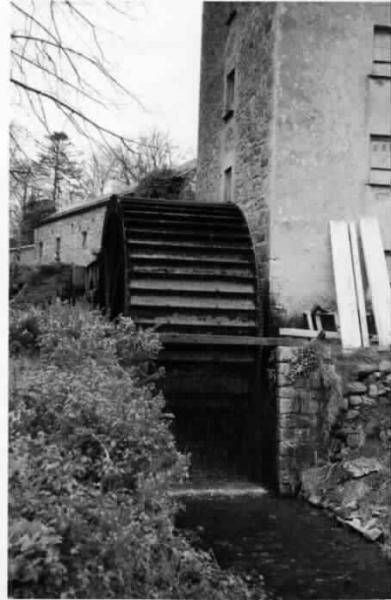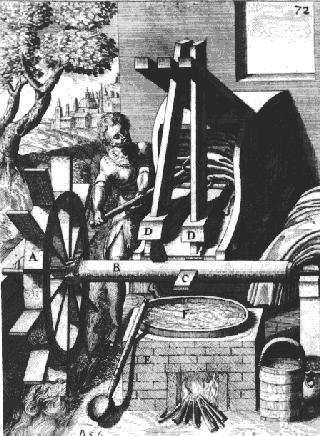The Cistercians
Today, let's talk about monks and waterwheels. The University of Houston's College of Engineering presents this series about the machines that make our civilization run, and the people whose ingenuity created them.
By the year 1098 water wheels had been around for a long time. But they'd only begun to revolutionize Western European social order. Here was a cheap and convenient power source to replace the backbreaking labor of grinding grain, fulling wool, and sawing wood. Labor had been the beginning and end of most people's lives through most of history. Now that was ready to change.
That year, 1098, the Cistercian monastic order formed. Fourteen years later, Saint Bernard took charge of the order. He moved it in a direction that would complete a major technological revolution. The Cistercians were a strict branch of the Benedictine order who fled worldly commerce to live "remote from the habitation of man." Under St. Bernard, they achieved that life by setting up economic independence based on high technology.
By the middle of the12th century the order rode the cutting edge of hydropower and agriculture. A typical Cistercian monastery straddled an artificial stream brought in through a canal. The stream ran through monastery shops, living quarters and refectories, providing power for milling, wood cutting, forging, olive crushing. It also provided running water for cooking, washing and bathing, and finally for sewage disposal.
Cistercian monasteries were, in reality, the best-organized factories the world had ever seen -- versatile and diversified. They represented a rather strange way of living "remote from the habitation of man," no doubt. But that's another matter.
Modern historians have been correcting the deeply ingrained idea that this was a Dark Age. The people who've passed down written records were generally remote from the world of making things. The scribes of kings always wrote about the narrow world of armies and slaughter. They had little to say about the engineers who really changed the world. Only recently have historians used archaeological records to determine what people were actually doing. Once they did that, they had to rewrite medieval history.
The Cistercian engineers developed their new technologies and spread them throughout Europe. They tinkered and innovated. Another life-transforming technology they shaped comes as a surprise.
As water power freed people's hands, literacy began rising. But books were still scarce. So the Cistercians organized the technology of making hand-written books. They developed the monastic scriptorium. They invented alphabetical indexing and pagination. They came as far as possible in mass-producing usable books -- before Gutenberg took book-making to another plane entirely.
By the time 742 medieval Cistercian monasteries had done their work, European life had emerged from whatever Dark Age had been. It'd finally emerged from a forest wilderness.
I'm John Lienhard, at the University of Houston, where we're interested in the way inventive minds work.
(Theme music)
Gimpel, J., The Medieval Machine. New York: Penguin Books, 1976.
This is a substantially revised version of Episode 9.

A 19th-Century Waterwheel Still Grinding Grist in Wexford County, Ireland
Photo by John Lienhard

A 17th-century European fulling mill from Böckler's Theatre of New Machines, probably quite similar to the Cistercian ones
Image courtesy of the University of Kentucky's Special Collections Library